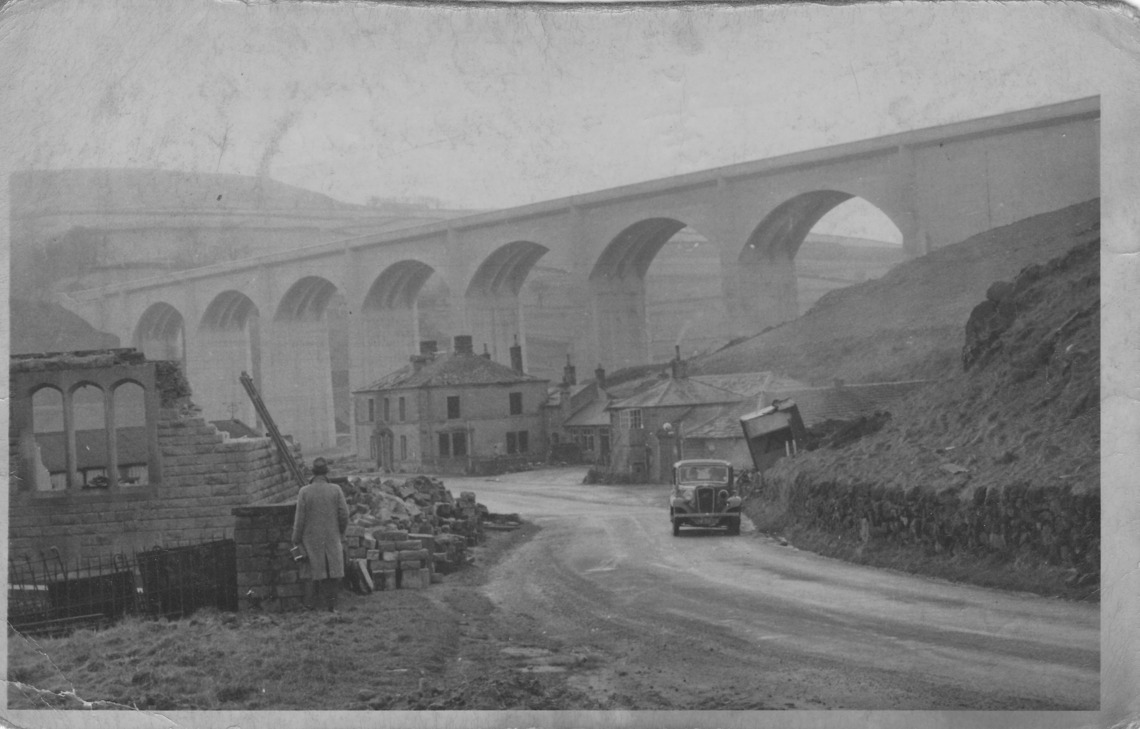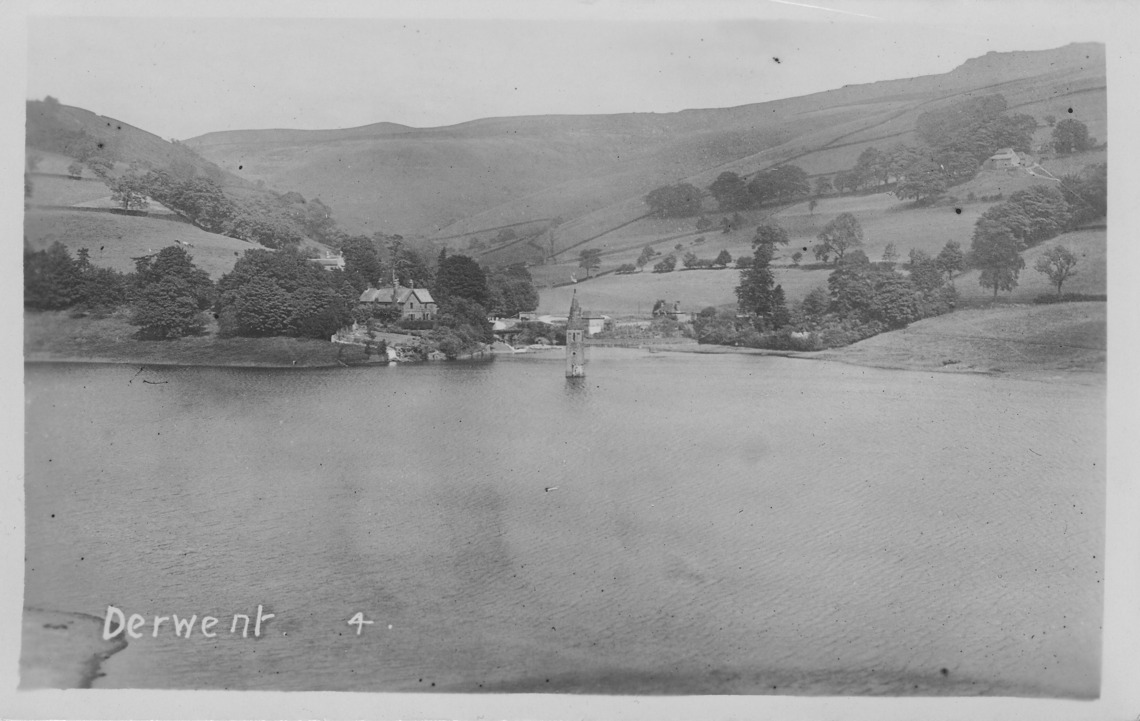Ashopton, Derwent and Ladybower
The history of Bamford is intertwined with the history of the Derwent, Howden and Ladybower reservoirs. In 1901 work began on the construction of the Derwent and Howden reservoirs, 7 miles from Bamford, in the Upper Derwent Valley. The scheme was developed to supply water for the growing populations in Derby, Leicester, Nottingham and Sheffield and surrounding areas.
Tin Town
A temporary village for the men working on the dams and their families was built in the Derwent Valley. It was officially called Birchinlee, but was always known locally as ‘Tin Town’, after the style of construction of the workers' housing. The village had a school, mission room, hospital, shops and recreation room. Up to 2,000 people came to work on the dams, and some families stayed, their descendants still living in Bamford.
The Railway
As well as ‘Tin Town’, a railway was built linking the massive construction site with the main Hope Valley railway. Around 1 ¼ million tons of stone from Bolehill Quarry above Grindleford Station, was taken 4 miles on a railway to Derwent Valley Water Board’s sidings at Bamford and thence by the Board’s own railway 6 or 8 miles to the dams. In addition, the workers used the railway to travel to Bamford and beyond.
The New Reservoirs
Howden Reservoir was formally opened in 1912 and Derwent in 1916. Ladybower Reservoir was built later between 1935 and 1943. Construction continued throughout the 1939-45 War despite the challenge of obtaining labour and materials. The filling of the reservoir began in 1943; it took a further two years to fill! The reservoir was formally opened in 1945 by King George VI.
The Lost Villages
However, two Peak District villages were flooded in the process of building Ladybower Reservoir – the villages of Derwent and Ashopton. Derwent had streets alongside the River Derwent, a school and Derwent Hall. The impressive hall was built in 1672 and was, at one point, owned by the Duke of Norfolk. Ashopton village was larger and busier than Derwent, being on the main road. It had a coaching inn, a post office, shop, a chapel and a garage as well as houses and farms.
The buildings of Derwent and Ashopton were purchased compulsorily by the Derwent Valley Water Board between 1935 and 1945, despite much local opposition. The villagers were moved out and rehoused in an estate at Yorkshire Bridge. There were 62 houses built at Yorkshire Bridge at a cost of £65,758. Bodies were exhumed from the churchyards, and all the buildings were demolished.
The church of St John and St James in Derwent held its final service on 17 March 1943. The final service at the Wesleyan Methodist Chapel in Ashopton was held on 25 September 1939, with the last hymn reportedly being ‘The Day’s Dying in the West’. The chapel was demolished in 1943.
The remains of both villages disappeared under the waters as Ladybower Reservoir was filled in 1945. Most of the buildings were demolished before the reservoir was filled, but Derwent's church spire was left to form a memorial. However, the spire was demolished in 1947 because of safety concerns. “The last church service must have been incredibly sad” said Kathleen Greenan, Chair of Bamford History Group. “Those villagers gave up a whole way of life. Most of them were rehoused in an estate. Everything must have been completely different for them – they would have been self-sufficient until then.”
WW2 and the Dambusters
During the Second World War, Derwent Dam was used by pilots of the 617 Squadron for practising the low-level flights needed for ‘Operation Chastise’ or the ‘Dam Busters’ raid, due to its similarity to the German dams. Today there is a commemorative plaque to 617 Squadron on the Dam.
The Ashopton 3D Project
In 2017 a collection or archive photographs of Ashopton was auctioned; Bamford History Group bought the collection at a cost of £310. Hearing about the auction, Chesterfield College worked with Bamford and District History Group to develop a unique exhibition. The exhibition showcased more than 100 enlarged photos, projected slideshows and memories recorded from people who had lived in Ashopton. College students used Virtual Reality tools to produce a 3D recreated walkthrough of the village. To access a video of the reconstruction click here.


